/weekTwo.AoWS
(17_october_2021)
Throughout this week we have been working on the basis of the Atlas of
Week Signals and exploring its possibilities. Weak signals are those emerging topics,
problems or subjects that have a significant impact on today's world. The aim of this
course was to introduce us to this Atlas to then analyse in a hyper-local way a
specific context, through Design Spaces and a Multi-scalar diagram (starting from the
"me" to the global scope of the matter).
.my_design_space
After the introductory session, Mariana took us to Collserola for a short hike from the Mundet university campus to one of the viewpoints along this small mountain range. The purpose of this walk was to gain perspective of our surroundings and to meditate on the theme of the Atlas we had chosen. In my case, it was also an occasion to remember old times, as we passed in front of the school where I had studied during my childhood.

In my case, I decided to focus my Design Space on three weak signals: Rural Futures,
Long-Terminism and Technology for Equality. I chose these concepts because I believe
there is a direct relationship between them and they are subjects that have always
interested me. In order to structure all the possible ideas, we used a tool
called Miro, an online board useful to create visual workspaces.
Rural areas do not have the same resources as big cities, and the same goes for
technology. There are no FabLabs or Ateneus outside urban areas, so it is very
unlikely that anyone can learn about digital fabrication and the maker world without
access to the necessary resources. So, taking into account the emigration from the
cities caused by the pandemic, the telecommuting and the current need to live in open
spaces, I thought it would be a good option to move these resources to rural locations
as well. Then the technologies could be combined with the tools and needs of the
particular environament.
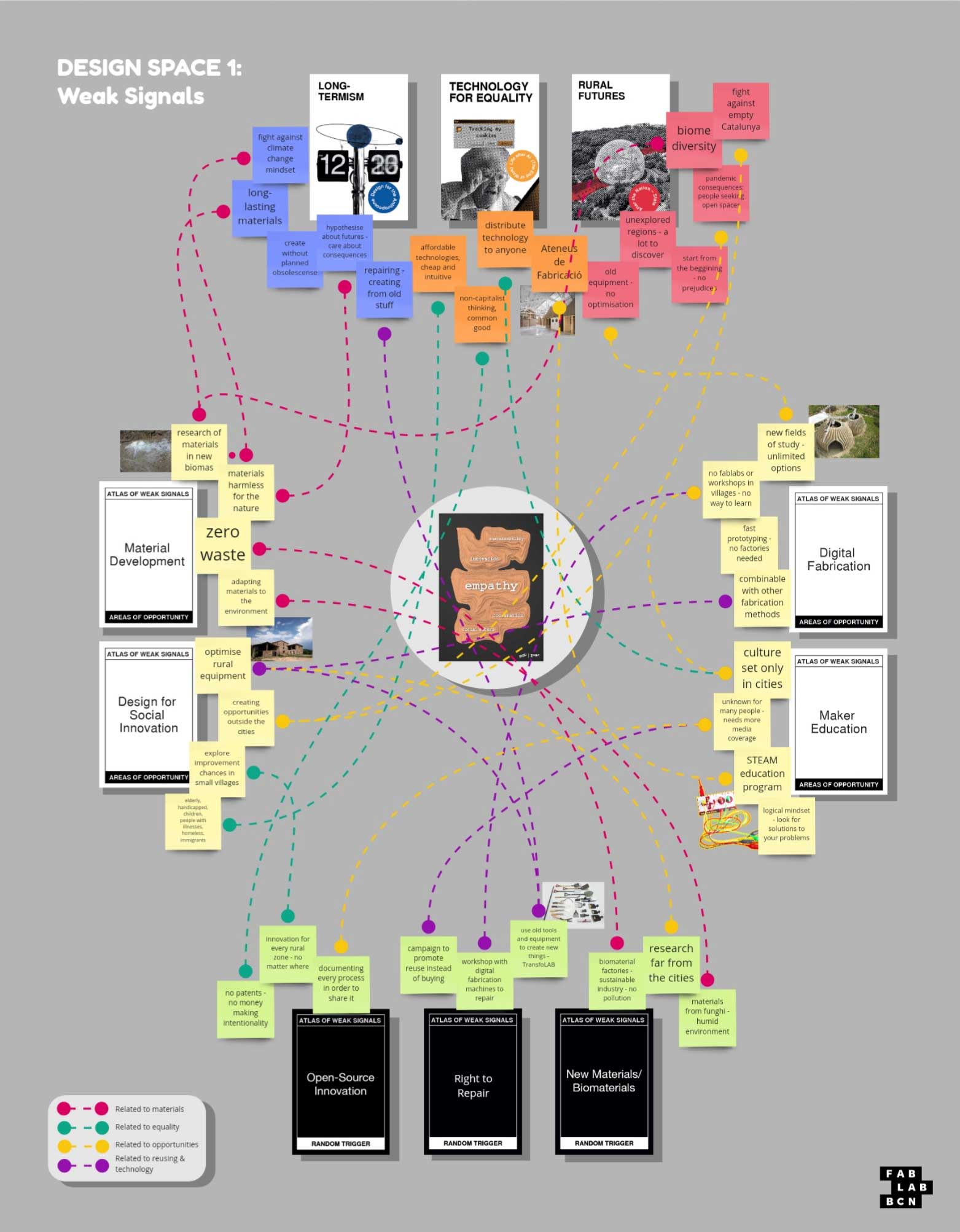
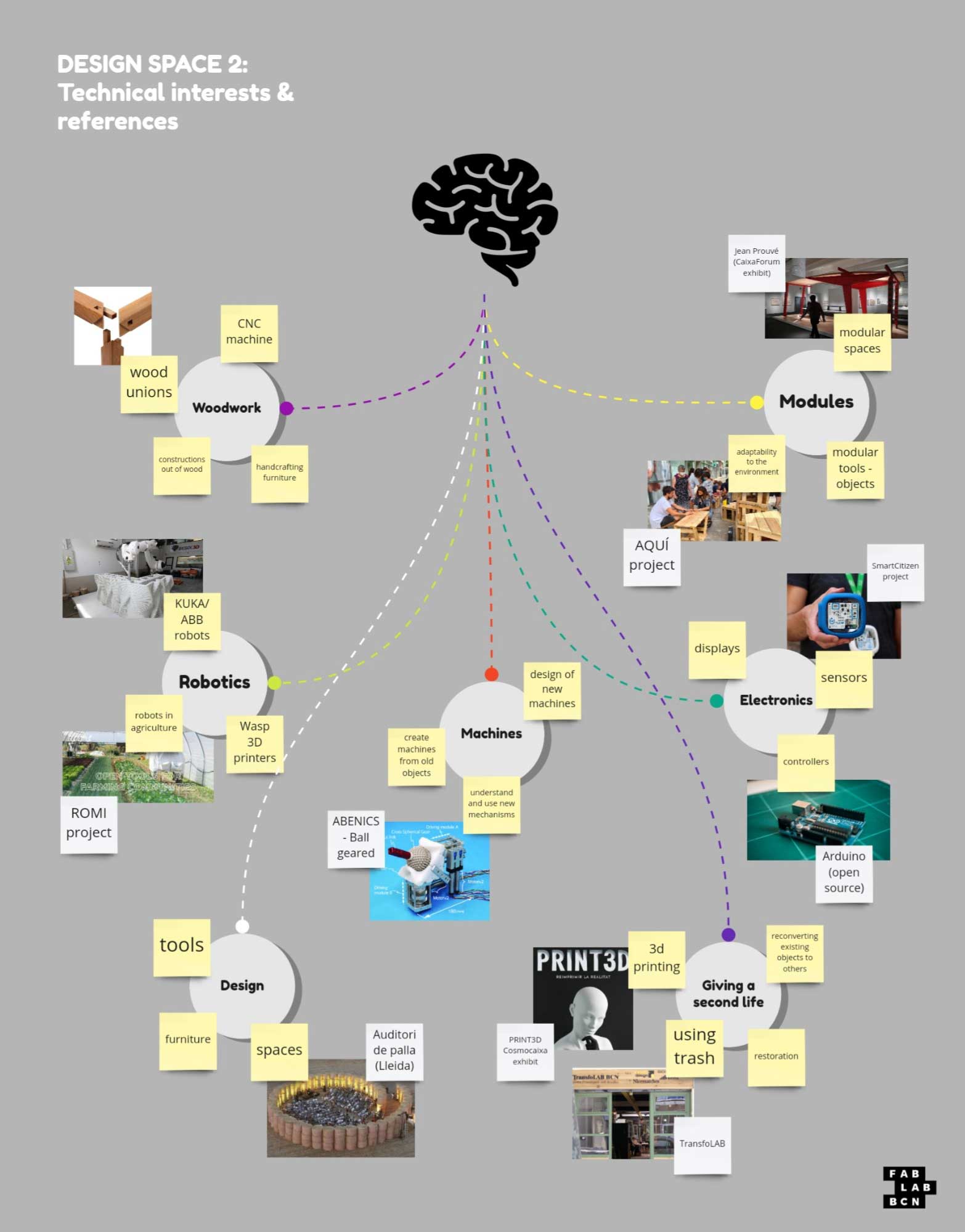
Apart from the main Design Space, I also created another one with my current technical
interests and with references to other projects related to the weak signals I chose.
As for my fight, I think there is a direct connection between the proposal of my Design
Space and the concepts I defined in my poster: empathy, innovation, social sphere, etc.
.multi-scalar_diagram
In this Multi-Scalar diagram I tried to mix the two Design Spaces I had created,
placing the different ideas in the scale to which they corresponded. It was not
very easy to know where to situate some concepts given that the repercussion of
these ideas is sometimes abstract and undefined. Even so, it was a useful exercise
to imagine how the themes raised in the Design Space affect the different levels
of communities.
Mixing the two Design Spaces also helped me to think of possible projects to realise
by combining concepts and ideas, so I wrote them down as they occurred to me next to the
Multi-Scalar diagram.
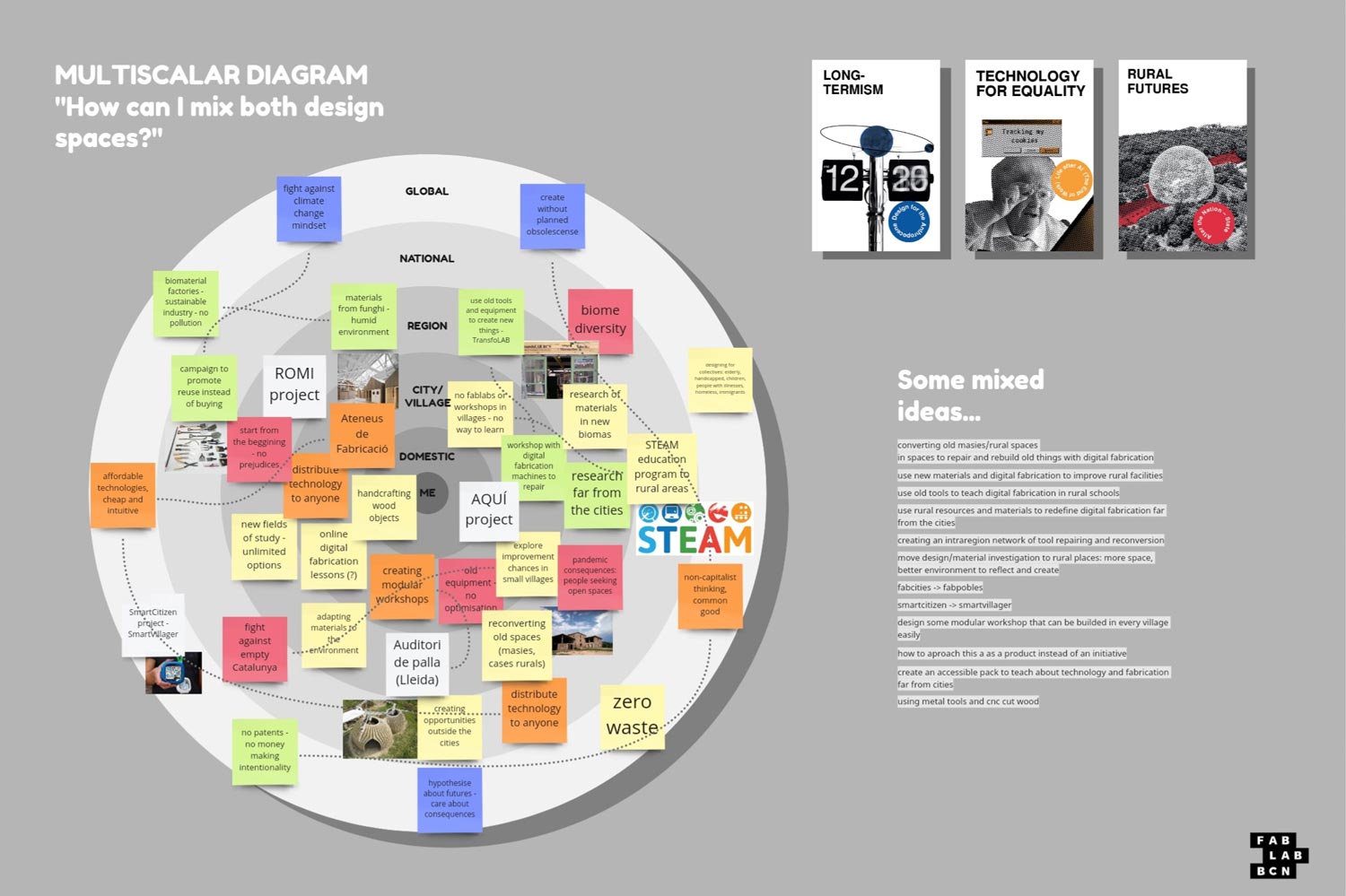
.collaborative_design_spaces
I was part of the Post-consumerism and State Futures Collaborative Design Spaces
and it was a great opportunity to get to know the vision of my classmates and
their Design Spaces and try to relate the concepts that each of us had created
separately. As expected, the fact that we were working on similar themes meant that
many ideas were interrelated and there were points in common. Even so, the knowledge
contributed by each one of us made this Collaborative Design Space wider and took into
account many points of view that otherwise would not have been included.
It was also a bit tricky trying to create a whole collaborative design space in only
half an hour each. With only talking about each other's projects we already had
fullfilled the time available. However, I appreciated much more talking to my classmates
than setting the design space in Miro since I believe communication is fundamental in
the context of collaboration.
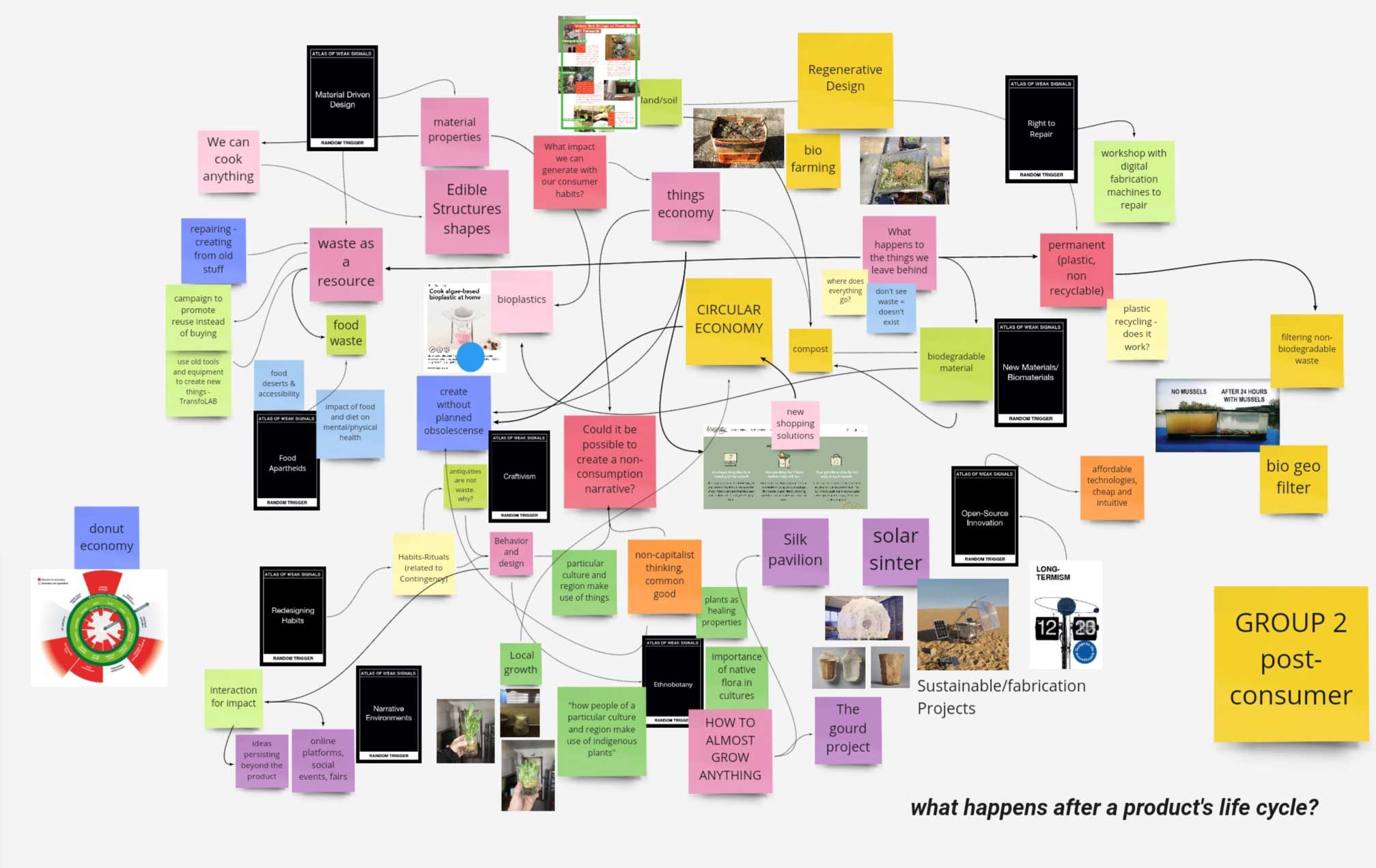
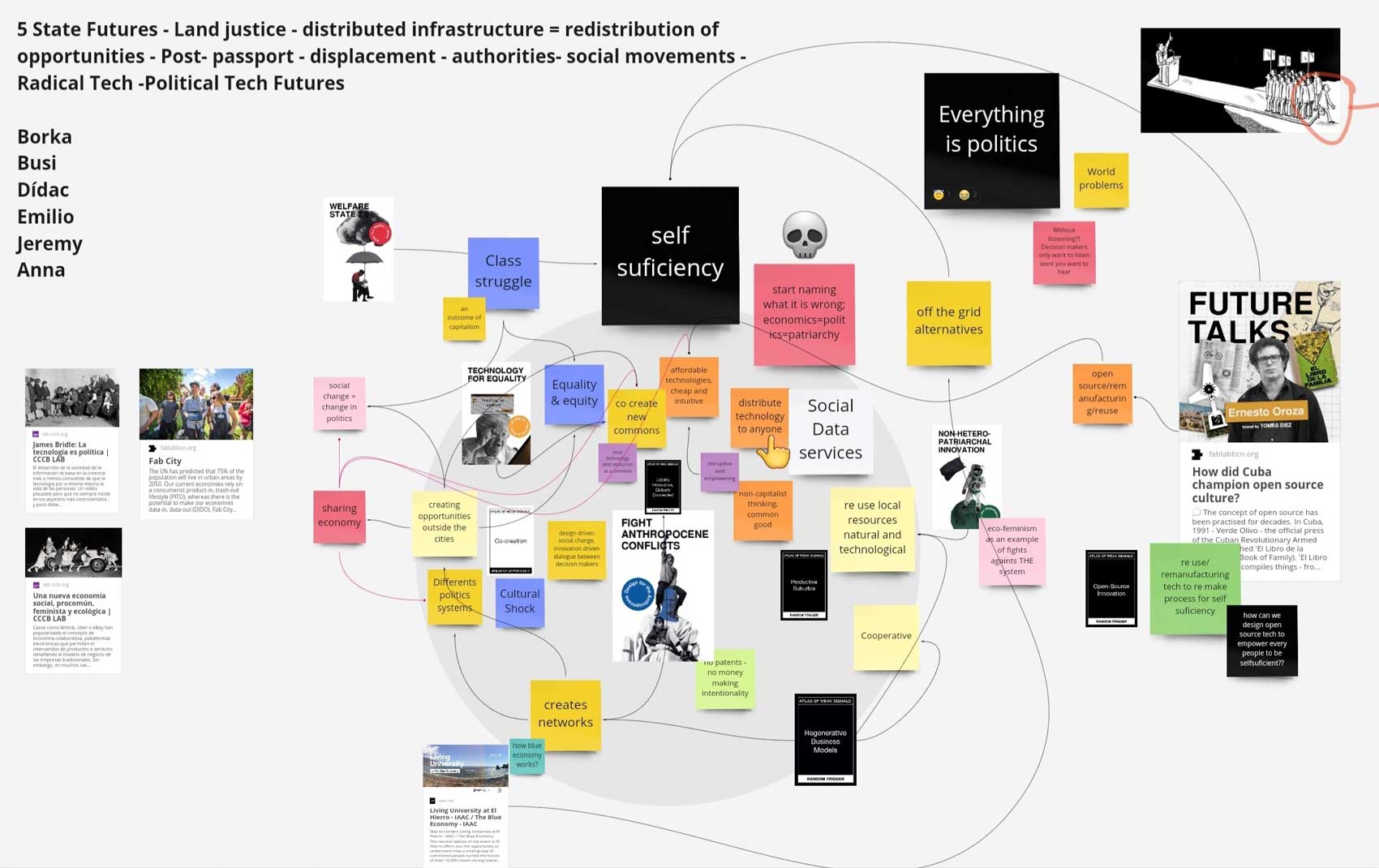
.contact_experiment_skill
To conclude this week, Mariana asked us to think about the next steps to take in our
project, considering three factors: someone to contact, an experiment to perform and
a skill we would like to add to our Personal Development plan.
Since my Design Space is closely related to technology in rural areas, I would like
to contact educational institutions located in rural areas in order to find out what
technologies they currently use in their schools and what is the programme they follow
in relation to STEAM. Knowing this, it would be possible to analyse more precisely how
to work with digital manufacturing in these areas and the resources at theirs disposal.
In relation to the experiment, I would like to explore what are the most used tools in
these areas, whether they are for agriculture, farming or anything else. After that,
the idea would be to collect some of these already used tools and try to transform
them into other objects, furniture or even machines. The aim of all this would be to
analyse the feasibility of giving a second life to these tools and, if possible, to
link them or reconvert them into manufacturing machinery.
Finally, one skill I would like to adopt in my Personal Development Plan would be to
learn how to generate renewable energy using nature's resources, be it wind, solar or
hydroelectric to power manufacturing machinery without relying on electricity from
electric companies or fossil fuels.
_____
.week_references
_Atlas of the Future: https://atlasofthefuture.org/
_Reasons to be cheerful: https://reasonstobecheerful.world/
_Index Award: https://theindexproject.org/
_Creative Applications: https://www.creativeapplications.net/
_Instructables: https://www.instructables.com/
_Hackaday: https://hackaday.io/
_FabLabBcn: https://fablabbcn.org/